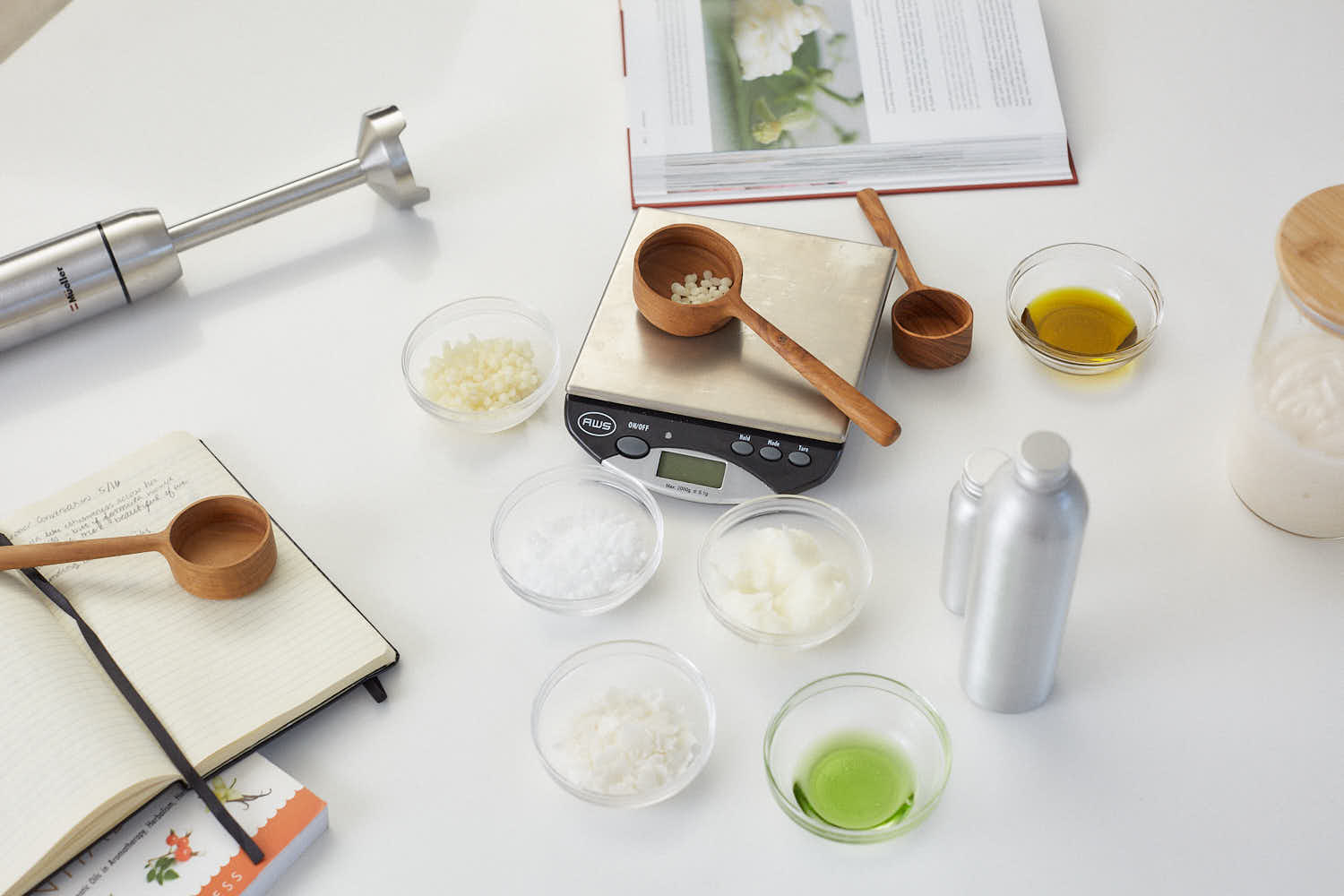Making your own beauty products can seem a little daunting at first - working with strange ingredients, calculating batch sizes, integrating a little science - but if you have ever cooked a new recipe in your kitchen, you can make your own lotion. We promise! The easiest way to become comfortable and learn is to just start making.
When touring a corporate cosmetics lab, most are surprised at how little equipment it takes to make products; a scale, mixer, hotplate, and some beakers. The same is true for at home. You don't need to invest in any lab-grade equipment unless you're a more serious home formulator or are producing your own products. Everything you need to make your own products successfully and predictably is already in your kitchen or can be acquired with minimal investment.
Scale
If there is one piece of equipment we urge everyone to invest in, it's a scale. Formulations should always be made with ingredients in weight measurements, never in volume using measuring cups. If ingredients are measured in volume, you may use a little more one time, and a little less another. The final product will never be the exact same. When ingredients are measured in weight, there is a guarantee the same amount of ingredient is used, every time. This is the key factor in replicating your product time after time. We reviewed many scales to give you our top 3 in this blog post. Our favorite scale right now is less than $30.

Many ingredients must be made with some heat application, and a double boiler or water bath on the stover is the easiest way to gently heat ingredients with control. The main vessel (the bottom pot on a double boiler) holds the water that is heated from the stove, while a second vessel (the top pot in a double boiler) contains the ingredients being heated. Any pot or double boiler in your kitchen will do. Don't have a double boiler? This blog post is a must read!

Thermometer
Measuring temperature accurately is critical to working with some ingredients. Many ingredients require a certain temperature for melting, while other ingredients can only be added below a certain temperature to protect their beneficial composition from heat. Many scientists work in Celsius, but our recipes will be in Fahrenheit. We like good old analog thermometers with clips, but this digital candy thermometer works well too.
Mixing Vessels and Stirring Utensils
The best bowls to work with are the ones that are made from glass and stainless steel. They can be sanitized easily and can tolerate being heated. We highly recommend Pyrex bowls with handles that are heat-safe, like the ones here. They're easy to pick up, too!
Any stirring utensils that are metal or silicone also work well. They're heat tolerant and can be easily sanitized. Avoid using wooden spoons when stirring because they can be difficult to sterilize and may introduce microorganisms into your product.
Immersion Blender
Most products can be made hand-mixed with ordinary utensils like whisks, but some products require intense mixing power to incorporate the ingredients together. For example, when making a lotion, we are bringing oil and water together with an emulsifier. That takes a lot of mixing power that hand-mixing can't deliver. Enter the immersion blender. Yes, that same tool used to blend up soups! We recommend purchasing a dedicated immersion blend for your ingredients to avoid potential cross-contamination with food. This Mueller Austria immersion blender is economic at under $40 and works great on all types of formulations.
Lab Notebook
Think of the lab notebook as your lab diary. You'll not only want to keep all your formulas written here with the names of ingredients used, whose ingredients they are, and the weight of each, but also the mixing instructions and any observations you've made during your work. In the lab world, we call this Good Documentation Practices. Record everything you do, everything you see. What worked? What didn't work? What did you like? These notes will help you reflect on what to do for future experiments. Any paper notebook or electronic file will work. The most important thing is that you use it diligently with every experiment.
Personal Protective Equipment
While this is last on our list, it's the most important. Safety always comes first. Check our product pages to see what safety equipment is needed to work with ingredients. This information is also available on every product's Safety Data Sheet. Always wear eye protection, even when working with the safest of ingredients. Wear gloves when handling ingredients indicating to do so. And, have a particle mask on hand when working with powdered ingredients.
And that's it! With just these few fundamental items, you're you're ready to head to the kitchen and start making products.
